So let’s take a look at a case which Tom Bouthillet from the EMS 12 Lead blog posted and assess it from a neuro perspective. Let’s start by reviewing his post.
Let’s approach the case in a linear fashion (I’ve bolded certain elements of interest): This gentlemen was perfectly normal until he walked outside, lost his balance and fell, was helped back inside, and experienced loss of consciousness and seizure-like activity. He is fully alert & oriented at the time of assessment.
On exam he presents pale & diaphoretic, tachycardic, with diastolic hypotension & a widened pulse pressure. A quick Cincinnati screen is negative (However a negative Cincinnati doesn’t mean the patient is 100% not suffering a stroke). Past pointing is observed. [This commonly refers to motor activity which overshoots a particular target. For example if I was trying to pick up a coffee cup and unintentionally reached 12 inches to the right of it.] His EKG is sinus in origin and negative for atrial fibrillation (pertinent negative for a neuro exam, since A-fib leads to clots).
Our patient takes a beta blocker, an Alzheimer’s medication, and cholesterol medication. His past history includes mild cognitive impairment (precursor to Alzheimer’s), hypertension and high cholesterol (stroke risk factors). Lets assume everything else is normal with the patient except for what has been mentioned. (One thing not given is the blood glucose level. Definitely remember to check this but for the purpose of the case we will assume it is within normal limits)
Starting with our chief complaint of a possible stroke, we can hold-off for now on activating a stroke alert since our patient is presently without deficit. Let’s ask ourselves if the patient’s symptoms have a neurologic origin, a cardiovascular origin, or a combination of the two?
1. One of the first things we want to know is did the patient quickly stand-up and walk outside right before the fall occurred or had he been up moving around for a while? Sudden changes in body position, especially in the elderly, easily lead to syncope or near-syncope as it takes the body time to adjust and keep a steady flow of blood going up to the brain.
2. Let’s look at the pulse pressure which is 62 mmHg. Typical pulse pressure (the difference between the systolic and the diastolic) is 30-40 mmHg. A wide (or high) pulse is a great, great indicator for cardiovascular risk and tells us that vascular compliance is low, meaning the heart is having to work extra hard when it contracts to get blood flowing. This is indicative of narrowed arteries, fitting in with the history of hyperlipidemia & hypertension. We also see a low diastolic of 53 (normally this would be >60). This was measured while the patient was sitting. Perhaps the patient is dehydrated, has been recently ill, or for other reasons has a slightly lower than usual circulating blood volume (or in geriatric patients, simply doesn’t command the reserve of blood a younger patient would). The systolic pressure is high because the heart must beat hard & crank up the pressure in order to force the blood through potentially narrowed vasculature. Blood pressure measures pressure, not volume, although the two are distinctly related. This low diastolic ties in with #1. If we have a resting DBP of 53, what happens to it when the patient suddenly stands and begins moving? We could surmise it would temporarily drop until the body compensates which may have caused dizziness.
3. Loss of balance & past pointing. This may be explained by the mild cognitive impairment. Remember, MCI & Alzheimer’s destroy neurons which can effect motor function. We should quickly ask about the progression of the patient’s disease and if balance issues and motor coordination have been observed previously. These could also simply be associated with the normal aging process. There could be a number of neurological causes for these symptoms and acute onset of neurologic deficit is always concerning. Knowing whether this is the first time these have been observed or not is crucial and should be asked. We could consider vertigo or some type of vestibular (system in the inner ear creating the sense of balance) disorder. We also can keep TIA (transient ischemic attack) on the list. There may have been a temporary clot which only briefly disrupted blood flow but this really doesn’t fit the clinical picture and would be atypical.
4. Here’s the tricky part. Upon sitting down, the patient’s eyes rolled back into his head and he began shaking all over. It’s difficult to tell much from a written case study versus actually assessing a patient. Could he have suffered a seizure? It’s a possibility. Seizures can result from a hypotension severe enough to cause near-syncope. If we think about it, our patient potentially stood up (causing a shift in the blood/cardiovascular system), exerted himself by walking outside (causing a shift in the blood/cardiovascular system), fell down (causing a shift in the blood/cardiovascular system), stood up, (causing a shift in the blood/cardiovascular system), and sat down on the toilet (causing a shift in the blood/cardiovascular system). This may have been enough disruption in the blood supply to the neurons to cause a brief seizure.  It’s a possible explanation and fits the clinical picture. Just like #3, we want to ask if this is the first time this has ever occurred. And remember, we assumed the blood glucose level was normal because it wasn’t given but think how things would change if we had a low BGL on top of all the other issues our patient has. All the more reason to have irritated neurons and a potential seizure.
1+2+3+4 leans us toward a cardiovascular origin of the patient’s complaint. However, we can’t discount the role the neurologic system plays in contributing to the patient’s condition, nor can we say for certain there isn’t an underlying neurologic condition behind it all. It’s highly unlikely, but this could be the first manifestation of an invasive, quick-moving, brain tumor.
A quick clinical tip: If you have the time and while you have your stethoscope out, take a listen to the patient’s carotid arteries. Abnormal (swooshing) sounds are called bruits, and indicated a narrowing of the artery. The patient is already at high risk for stenosis and if there is significant carotid stenosisthen this contributes much towards the theory that adequate blood isn’t able to reach the brain.
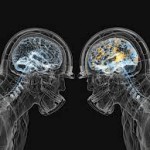


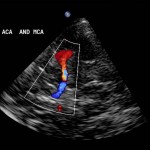
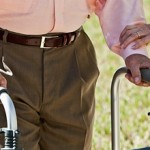

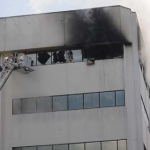

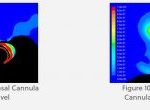

4 Comments
Thanks for that
Your welcome! Thanks for your support!
Very interesting, interdisciplinary approach is essential in the differential of syncope, thanks for that!
Agreed. It’s best to attack a problem from multiple angles. Thanks!